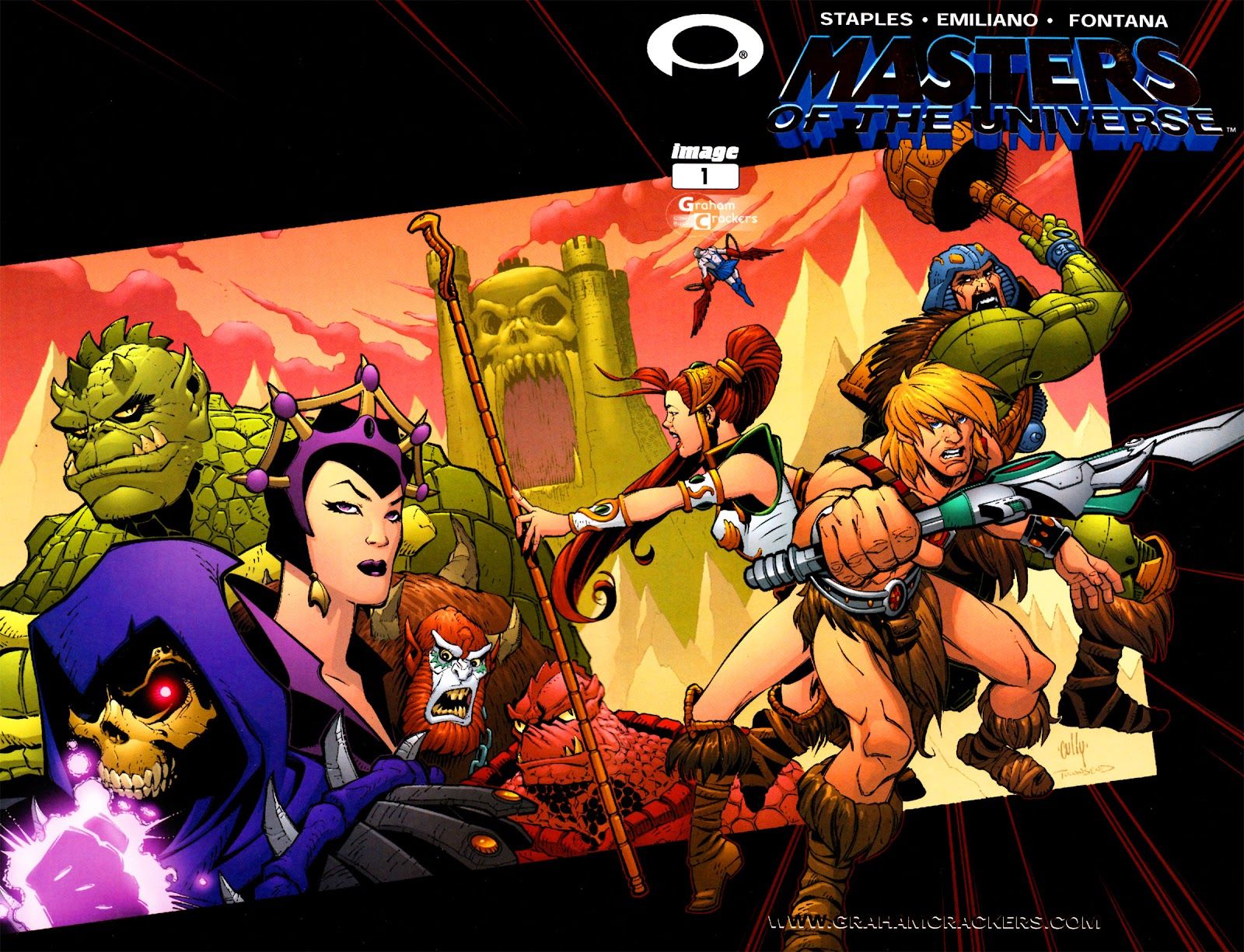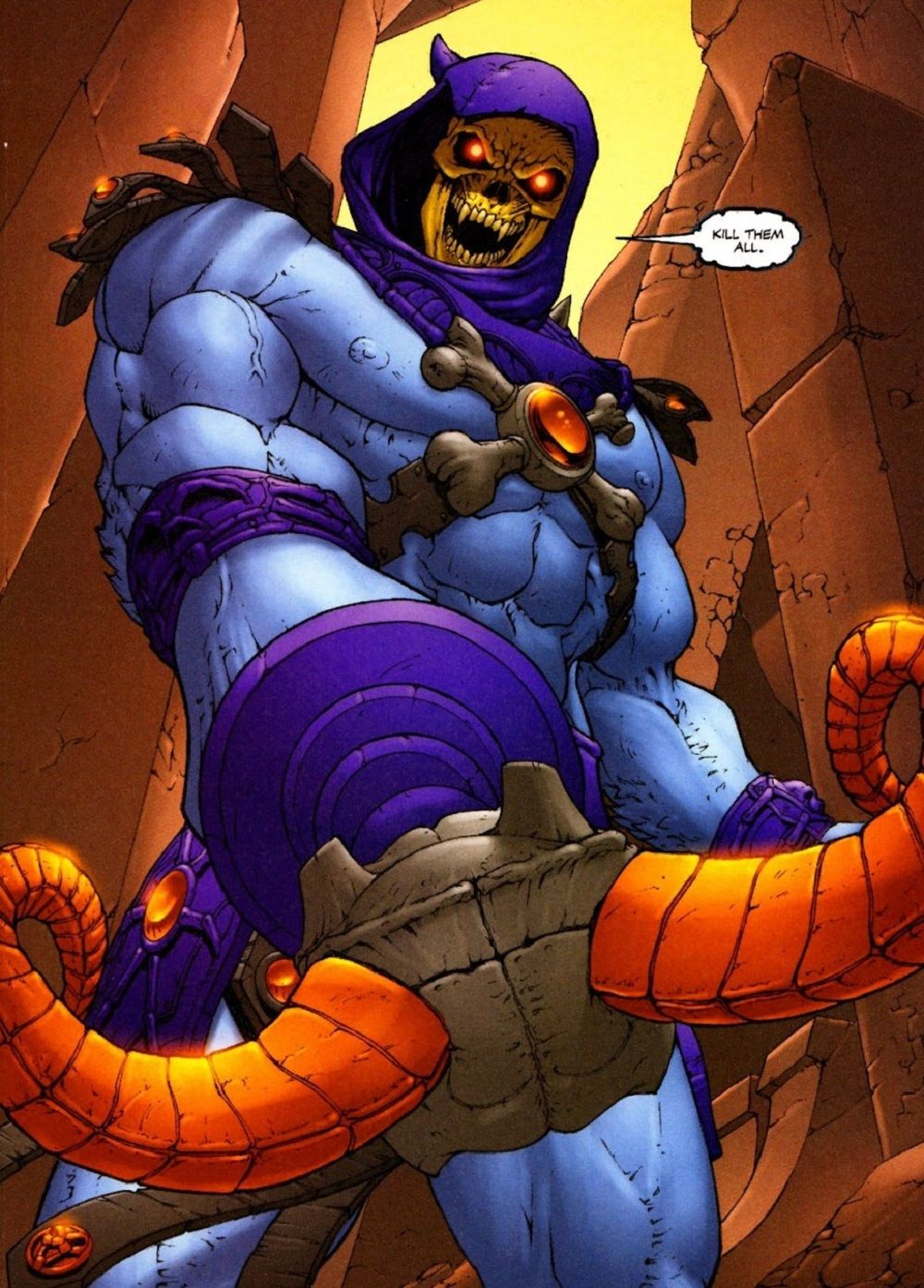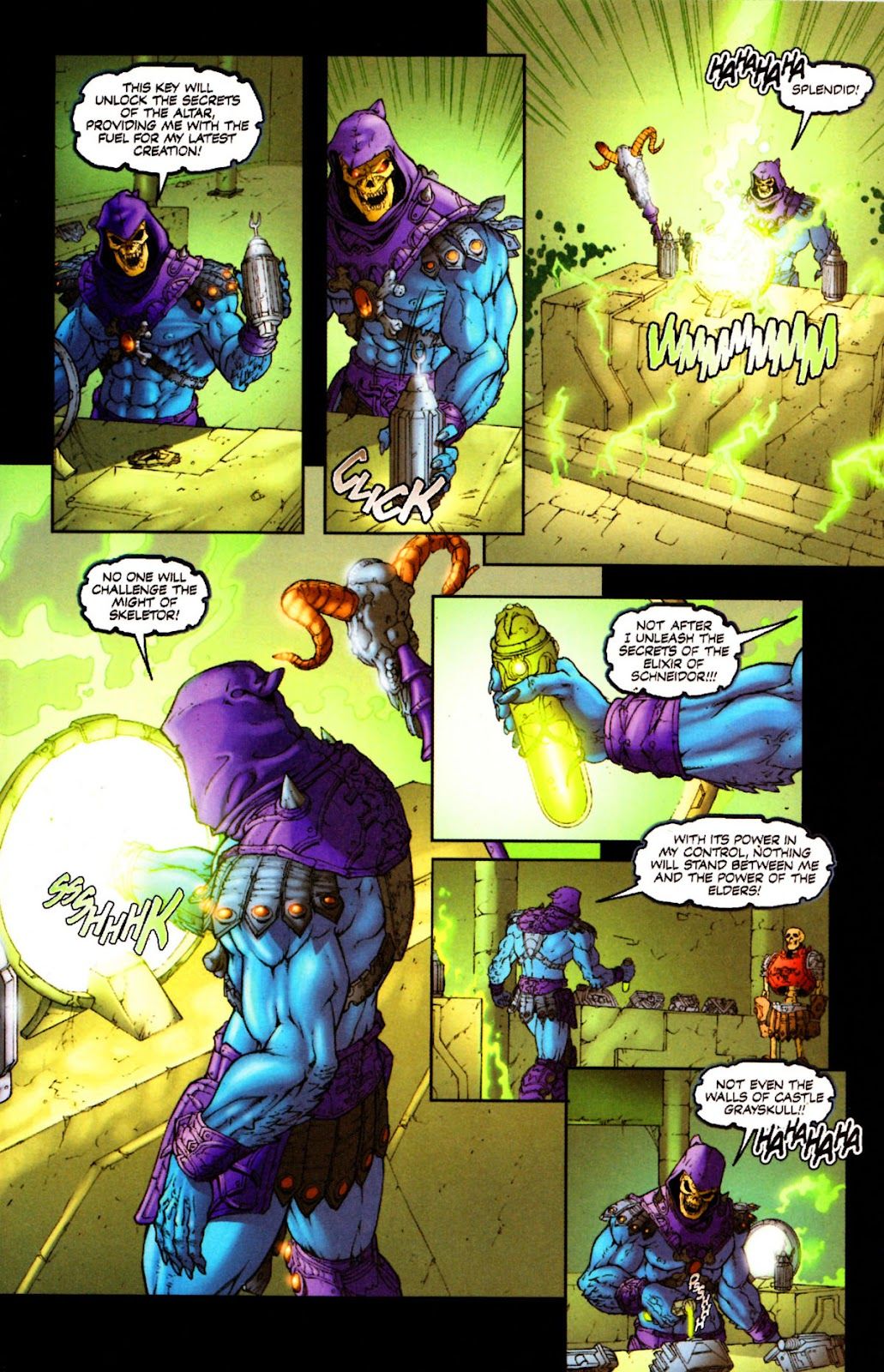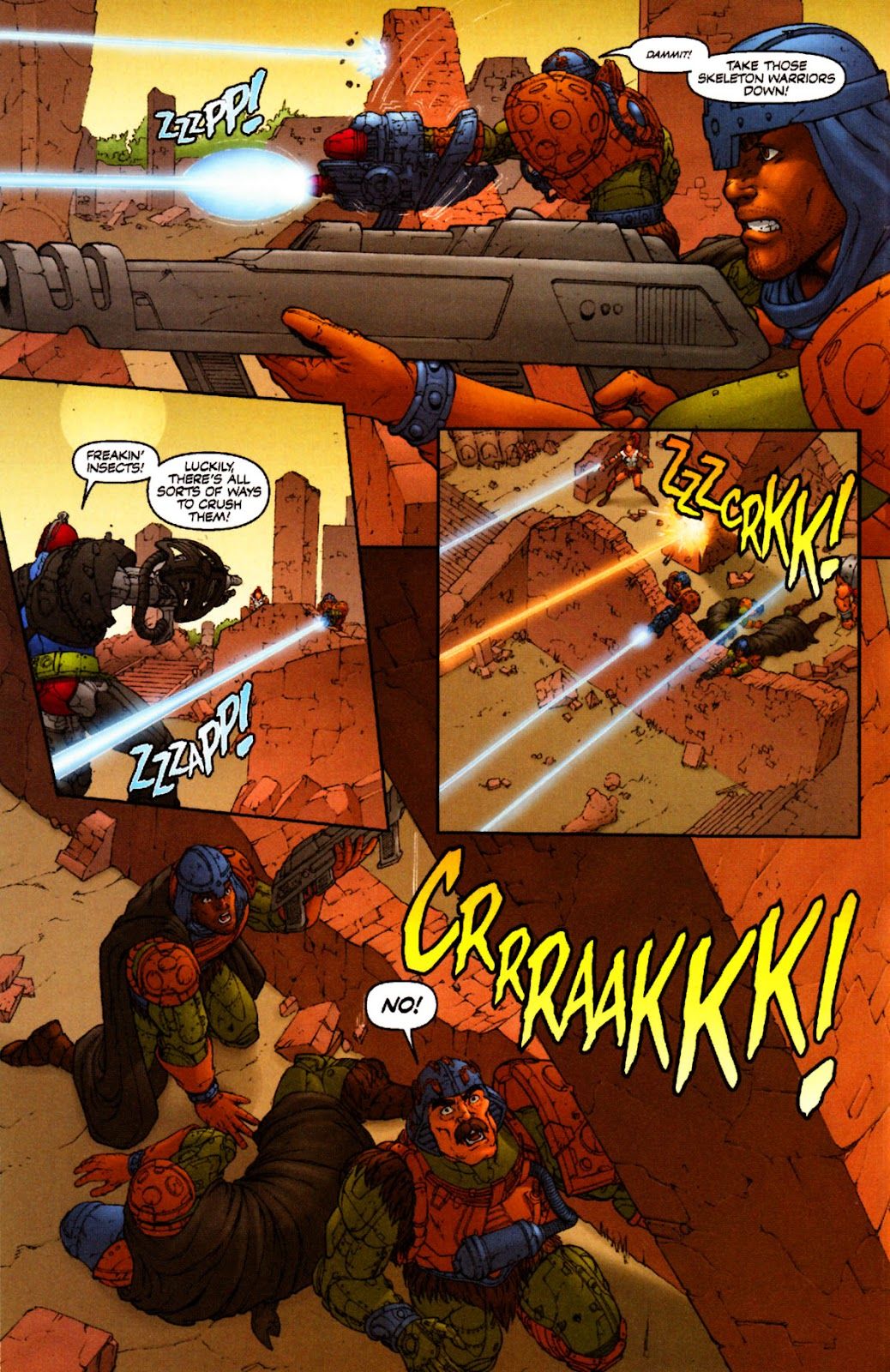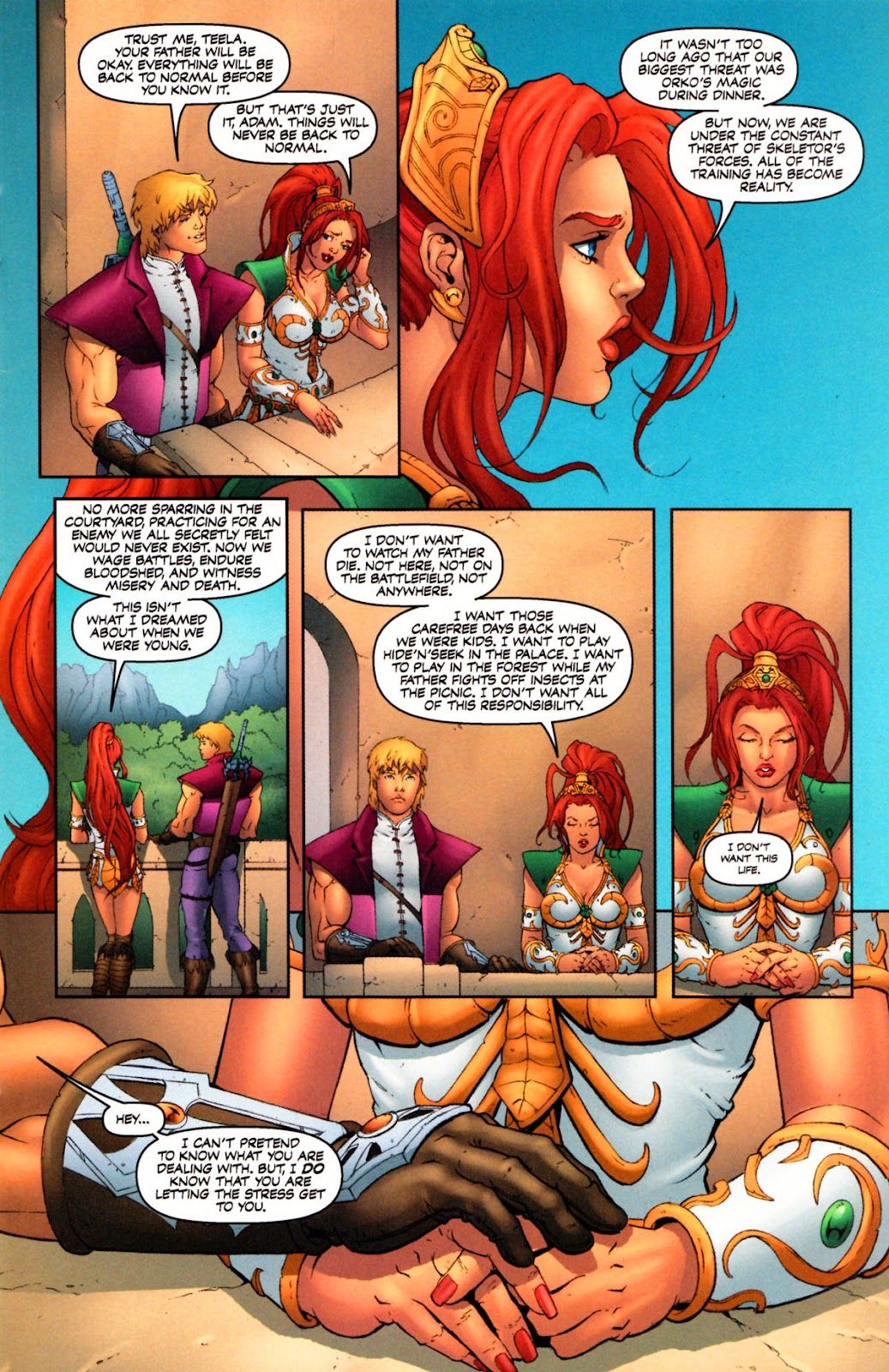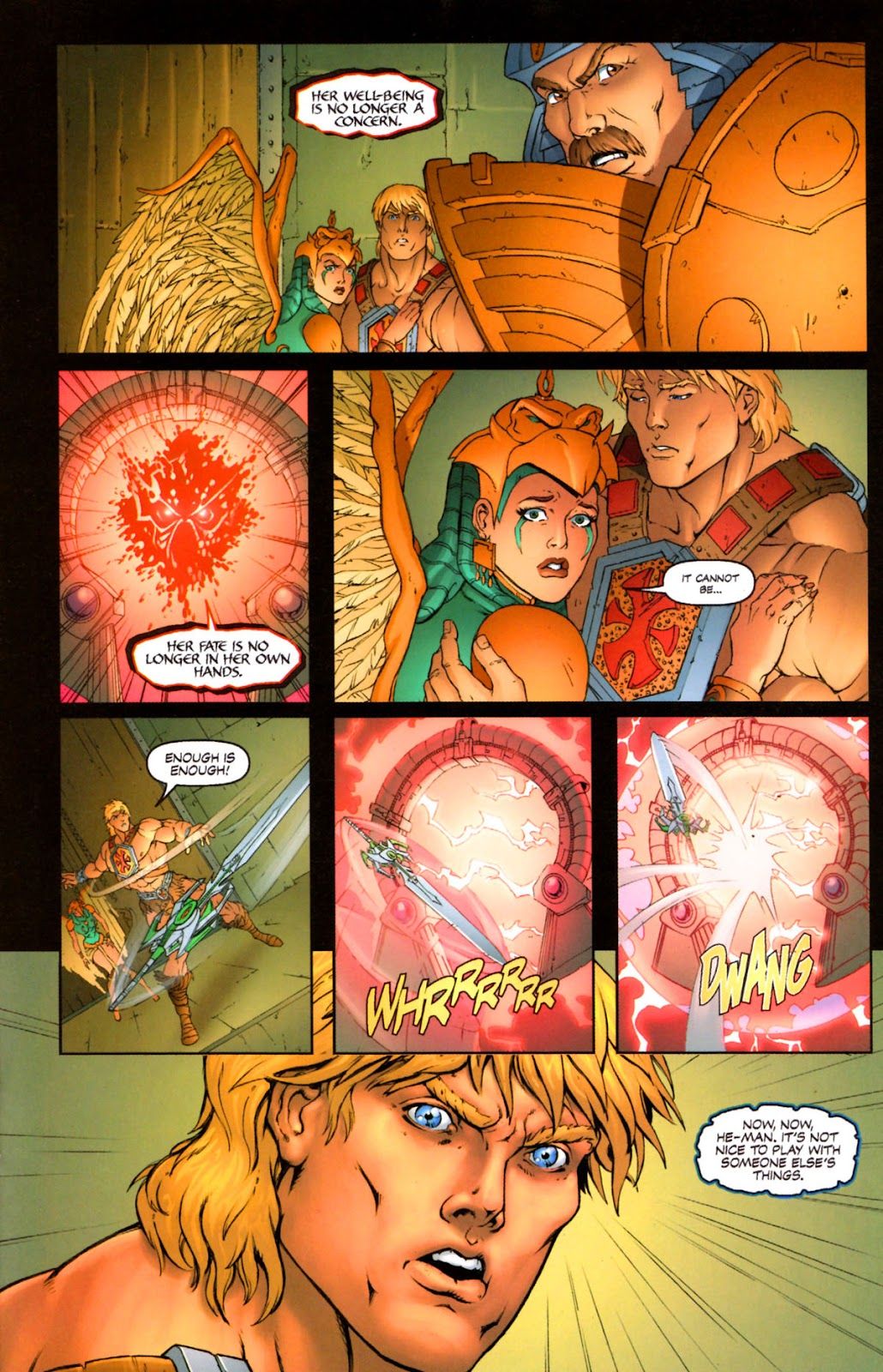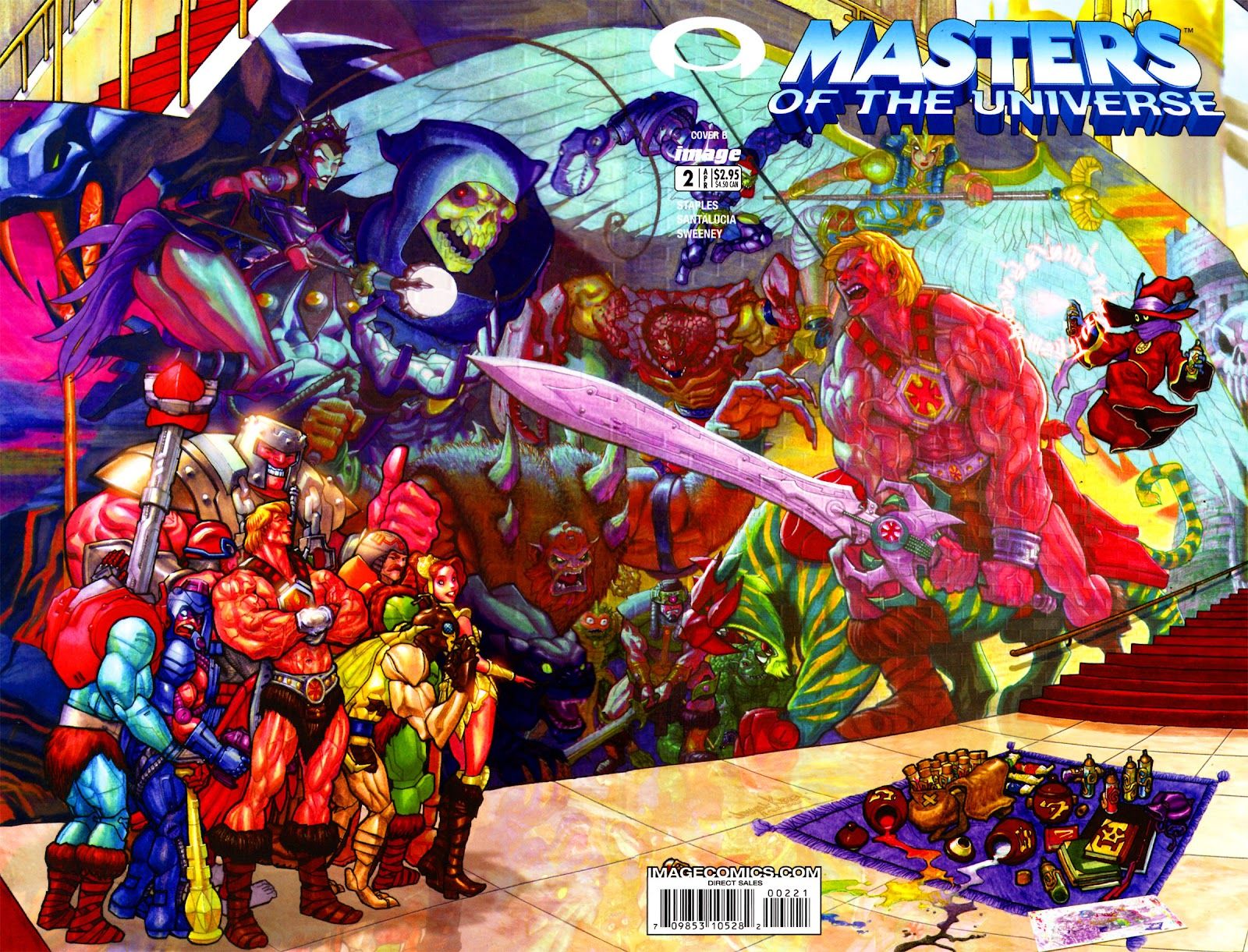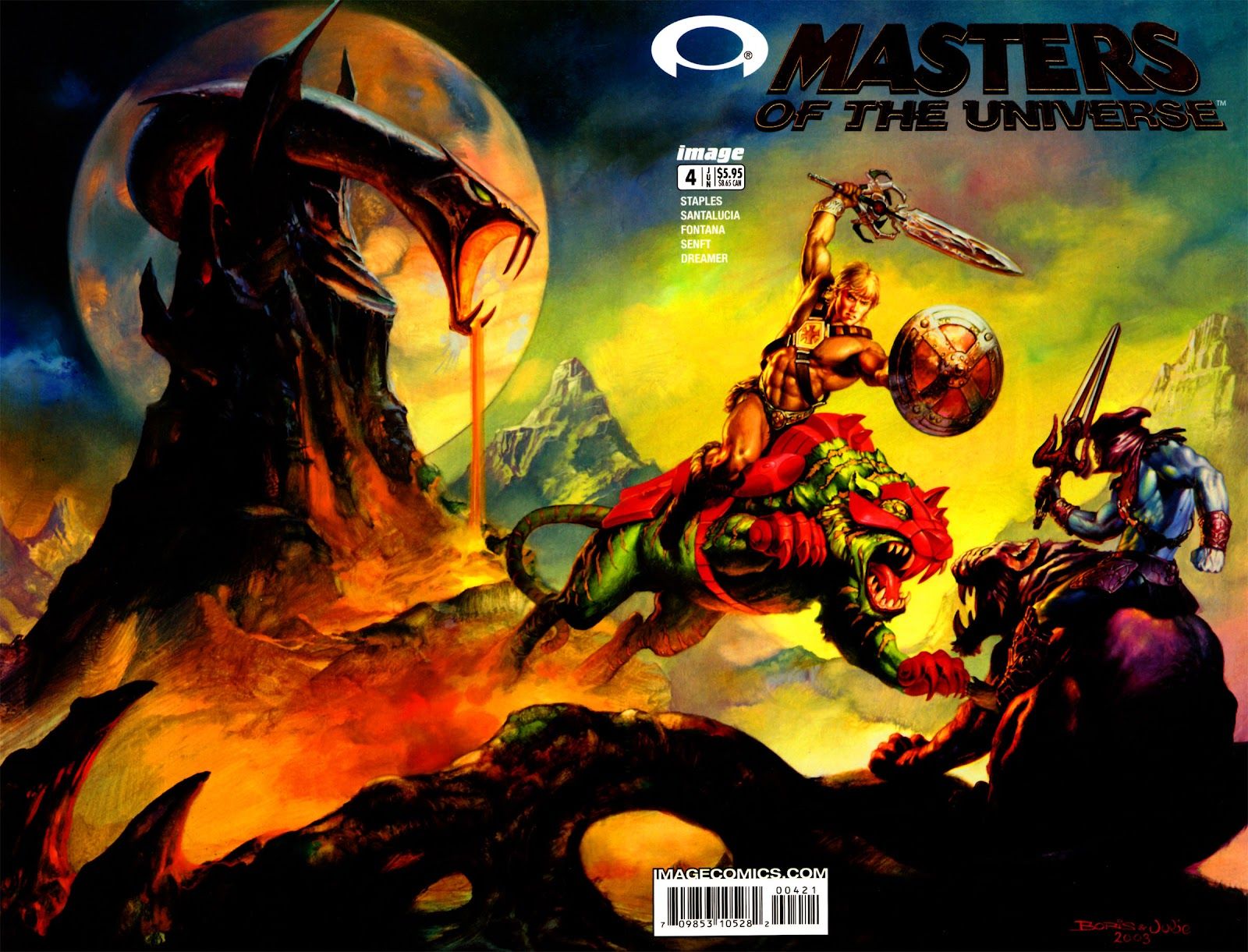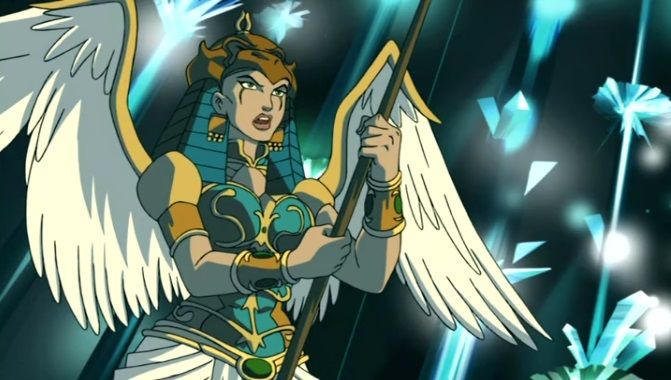Welcome to the 18th installment of Nostalgia Snake, a look at 2000s revivals of 1980s properties, revivals now so old they're also quite nostalgic. (Hence the snake of nostalgia eating itself.) This week, Image's second attempt to capture the '80s magic of He-Man and the Masters of the Universe. And if you have any suggestions for the future, let me hear them. Just contact me on Twitter.
Going into 2003, the '80s revival boom dominated the comics industry, giving the twenty-somethings keeping comics shops alive exactly what they wanted – more serious takes on the heroes they remembered from '80s cartoons, paired with stylized art and contemporary production values. G. I. Joe and Transformers benefited from coming out of the gate early. At the same time, Masters of the Universe had to walk a line between nostalgia and promoting the newest line of MotU action figures, which were the source of a revamped mythology. The comics weren't leading the way on the re-imagined take on the lore, as toy maker Mattel was funding a new animated series airing on Cartoon Network. The comics from Val Staples and his studio MVCreations had to follow the show's lead.
The Less-Tame Sequel
The opening miniseries played nice with the cartoon, toying with the lore and providing a magical source for arch-villain Skeletor's powers but never doing anything drastic with the status quo. The hook for the story had He-Man tempted by his darker nature thanks to a mystic MacGuffin, but ultimately, "The Shard of Darkness" turned out to be a pretty tame affair.
Returning for a second miniseries with the creative team of writer Val Staples and artists Emiliano Santalucia and Enza Fontana, there seems to be a willingness to bring some edge to the world of Eternia. The opening page is a stark image of Skeletor delivering this blunt line, worthy of '80s thrash metal: "Kill them all."
What follows is a brutal assault from Skeletor's men against the Eternian Royal Guard. Particularly brutal if you're one of the faceless soldiers, as most seem to die in the opening. Things aren't easy for established players, either. Both Mekaneck and the Sorceress suffer injuries in the early chapters. The mood is set from the opening pages – this is a more violent, more dangerous vision of Masters than you've seen on television.
In the midst of the action, we learn Skeletor has targeted a temple in Eternia's Light Hemisphere that houses an ancient altar that doubles as an interdimensional portal. For reasons unknown, the creators have dubbed this the Temple of Schneidor, a name that doesn't sound very MotU and has apparently never been referenced since this story saw print. The Masters (previously the "Heroic Warriors" in the 1980s, back when the specific identity of the Masters Of The Universe was hazy) are unable to prevent Skeletor from fleeing with a mysterious elixir. Skeletor plans on using the discovery to advance teleportation technology and infiltrate Castle Grayskull.
Adult Drama and Kids' TV
It's evident the creators aren't treating this as a cute, wink-and-nod tribute to the original cartoon. Although there's reverence for the old material, the goal is to take the drama as seriously as any other action-adventure book on the market. This means the dialogue isn't a collection of snarky comments or shoehorned jokes about the '80s show. While the script might be a little wooden at times, it deserves credit for giving the story an appropriate weight. The one character who is allowed to crack wise is Skeletor, who often serves up some brutally mean roasts of the heroes and his own men. Rather than undermining the story, it serves to make the villain truly nasty in a way we haven't seen before.
While fighting Skeletor's flunkies, Man-At-Arms is pulled through a portal, then quickly reappears, his body in a coma. He doesn't experience a quick recovery, allowing the story to slow down and shift to focus on his daughter Teela, and He-Man's foppish secret identity, Prince Adam. An emotional Teela is allowed an honest reaction to seeing her father lingering close to death, her dialogue perhaps a meta-commentary on how the stakes are no longer those of the 1980s cartoon. The rebooted Cartoon Network series also took the concept more seriously, but this sequence might be the first time we've seen the characters work through real adult drama in such a stark way.
Eventually, the Masters learn from the Sorceress that this is a Man-At-Arms from an "opposite reality." The counter Man-At-Arms, who doesn't understand why this "rebel" He-Man admires him so much, causes trouble and is eventually brought to the Castle where he can be teleported to his home world. The alternate-reality Man-At-Arms is swapped with the real thing, and along the way, there are some cool fight scenes between He-Man and Skeletor and the Sorceress and Evil Lynn.
But, making a surprise cameo in the final pages is Hordak...or his distinctive word balloons, at least. The villain, played as a deadly menace from Eternia's past in this continuity, tries to use this portal to return to Eternia but is foiled by He-Man. Skeletor hears the voice of Hordak and isn't pleased about the possibility of him returning, an attempt from the creators to acknowledge future episodes of the Cartoon Network series.
Covers Vs. Interiors
Aside from normalizing the presence of 1980s toy properties on comic stands, the 2000s revamp titles also helped to mainstream the concept of monthly variant covers. There are some genuinely great ones here, like a "street art" version of the cast from JJ Kirby and a wraparound cover from famed fantasy artists Boris Vallejo and Julie Bell.
The interior art hasn't evolved since the first miniseries. It's heavily inspired by the look of late '90s/early '00s superhero comics, with some manga influence to compliment that overly muscled cast. The inking can be frustrating, as every line is incredibly thin, regardless of whether it's detailing human skin, a rocky battlefield, or sleek machinery. The colors also stick with a relentlessly yellow and orange palette, with practically no shading. The great thing about color advances introduced by studios like Udon in this era is how much depth and mood could be added to the pages with elaborate shadows, so it's disappointing to see these incredibly flat pages. Regardless, the storytelling usually flows well, and the cast does look consistently on-model (and keeping these heavily detailed designs straight couldn't have been easy.)
More Than a "Toy Comic?"
While the other '80s revamp books were seemingly given the freedom to homage or junk or re-imagine anything from the past they pleased, MVCreations couldn't contradict the new Masters cartoon or do anything that could cause problems for Mattel's new toy line. This led to an introductory miniseries that had a decent concept but often read as a non-continuity "Adventures" comic that had to sneak between episodes of the new cartoon.
The second miniseries feels far less frivolous, with interesting story turns and surprising sentiment in a few places. It is odd, however, that the most memorable aspect of the storyline is Teela's heartache over her father's condition and disillusionment over their constant battles against Skeletor, yet she drops out of the story by the end. There's also a brief acknowledgment of Man-At-Arms' complicated history with the Sorceress, but no real payoff by the finale. Despite those lost opportunities, MVCreations delivers solid work, showing that even "toy comics" can be fun if they're produced by genuine fans who want to do right by the characters.

.jpg)
